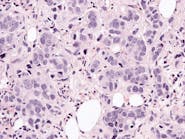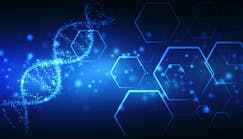Scientists are harnessing hard X-rays in the fight against cancer. A team of researchers, in conjunction with the U.S. Department of Energy’s (DOE) Argonne National Laboratory, has used ultrabright X-ray light to determine how specific types of antibodies can tell the difference between different forms of a cancer-linked molecule. These new insights will help scientists design better antibodies for potential treatments.
Their work and findings were recently published in the Proceedings of the National Academy of Sciences (PNAS).
Tony Hunter, Professor at the Salk Institute for Biological Studies, led this new research, building on years of study at his lab into amino acids, the building blocks of proteins. Hunter and his team were the first to show that adding phosphate to tyrosine, one of 20 amino acids in the human body, contributes to the progression of cancer. Their discovery not only led to the development of anticancer drugs, but also inspired researchers to start examining phosphate in combination with other amino acids.
Histidine, an amino acid the body uses to synthesize proteins, is the new target under study at the Hunter Lab. When phosphate is added, it forms phosphohistidine, an unstable molecule that has been linked to liver and breast cancer and neuroblastoma, a type of cancer often found in the adrenal glands.
To better understand phosphohistidine’s potential role in cancer, the Hunter research team has, for the past eight years, been developing and studying antibodies that can bind to it. But to discern exactly how these antibodies work, they needed a more specialized set of tools.
The Advanced Photon Source (APS), a DOE Office of Science User Facility at Argonne, was one of three light source facilities the research team used to gain more insight into this problem. At the facilities, they used a technique known as X-ray crystallography to determine the crystal structures of their antibodies bound to peptides (short amino acid sequences) containing phosphohistidine.
To make use of this technique, Hunter’s team worked alongside researchers at The Scripps Research Institute and used three different light sources — the APS, the Advanced Light Source at DOE’s Lawrence Berkeley National Laboratory, and the Stanford Synchrotron Radiation Lightsource at DOE’s SLAC National Accelerator Laboratory. All three are DOE Office of Science User Facilities that provide extremely intense, small X-ray beams that are particularly useful for this type of technique.
Researchers first grew crystals of their antibodies bound to phosphohistidine peptides. These were then sent to the light sources, which had capabilities that allowed the researchers to place their crystals in an X-ray beam remotely. Upon contact with the crystals, the beams scattered, creating diffraction patterns that were collected and used to determine the 3-D atomic structure of the antibodies combined with the phosphohistidine peptides.





